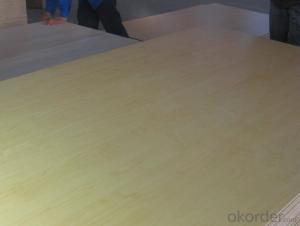When it comes to building or renovating, the choice of materials is crucial. One such material that often comes into play is plywood. But not all plywood is created equal, and the thickness of the plywood can make a significant difference in your project. Let’s dive into the world of 1-1/2 plywood and explore why its thickness matters.
The Beauty of Plywood
Plywood is a versatile and reliable material, made from thin layers of wood veneer that are glued together. It’s known for its strength, durability, and resistance to warping. But the thickness of the plywood can affect its performance and suitability for different applications.
Why 1-1/2 Inch Plywood Stands Out
1-1/2 inch plywood is a popular choice for a variety of reasons. It offers a good balance between strength and weight, making it ideal for a wide range of projects. Whether you’re building furniture, constructing walls, or creating a sturdy base for a heavy object, 1-1/2 inch plywood can handle the job.
Applications of 1-1/2 Inch Plywood
Let’s take a closer look at some of the common applications where 1-1/2 inch plywood shines:
– Furniture Making: The thickness provides a sturdy base for tables, chairs, and other pieces of furniture.
– Wall Construction: It’s perfect for creating non-load bearing walls, providing a solid yet lightweight structure.
– Floor Underlayment: Before laying down hardwood or laminate flooring, 1-1/2 inch plywood serves as an excellent underlayment for a smooth and stable surface.
– Roof Sheathing: For roofing projects, it offers the right balance of strength and flexibility to withstand the elements.
The Importance of Plywood Thickness
The thickness of plywood can impact several aspects of your project:
– Structural Integrity: Thicker plywood can support more weight and is less likely to warp or bend.
– Cost Efficiency: While thicker plywood may cost more, it can save you money in the long run by reducing the need for additional support or reinforcement.
– Aesthetic Appeal: The thickness can affect the final look of your project, especially in furniture making where a sleek design is desired.
– Ease of Handling: Thinner plywood is easier to cut and maneuver, but 1-1/2 inch provides a good balance of workability and sturdiness.
Choosing the Right Plywood for Your Project
When selecting plywood for your project, consider the following factors:
– Project Requirements: What are the specific needs of your project in terms of strength, weight, and durability?
– Budget: How much are you willing to invest in the material, and does the cost justify the benefits?
– Availability: Is the plywood you need readily available, or will you need to special order it?
– Environmental Impact: Is the plywood sourced from sustainable forests, and is it produced with eco-friendly practices?
The Personal Touch in Plywood Selection
Plywood selection isn’t just about the numbers; it’s also about the personal connection you have with your project. Whether you’re crafting a piece of furniture for your home or building a structure for a community space, the choice of plywood can reflect your values and style.
Emotional Connection to Plywood Projects
There’s something deeply satisfying about working with plywood. It’s a material that responds well to both simple and complex designs, allowing you to express your creativity and craftsmanship. The choice of 1-1/2 inch plywood can be a statement of quality and commitment to your project.
The Future of Plywood: Innovation and Sustainability
As the construction industry evolves, so does the use of plywood. Innovations in manufacturing processes and materials are leading to more sustainable and efficient plywood options. Choosing 1-1/2 inch plywood that aligns with these trends can future-proof your project and contribute to a healthier environment.
Wrapping Up
In conclusion, the thickness of plywood, particularly 1-1/2 inch, plays a pivotal role in the success of your project. It’s not just about the physical properties but also the emotional and environmental impact of your choices. So, the next time you’re planning a project, give some thought to the thickness of the plywood and how it can enhance your vision.
Remember, the right plywood can make all the difference in bringing your ideas to life.

